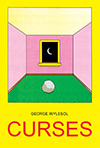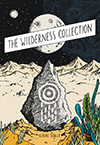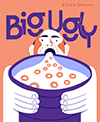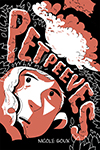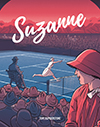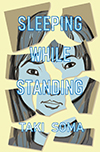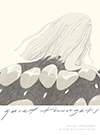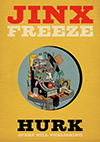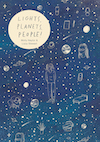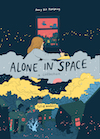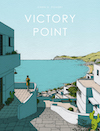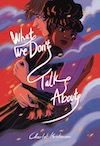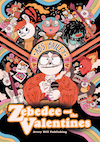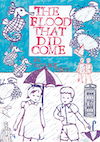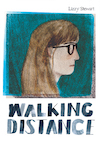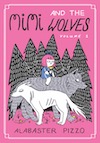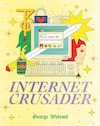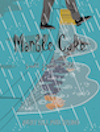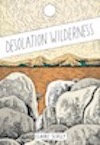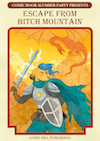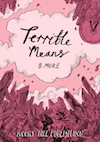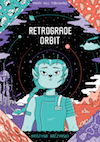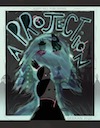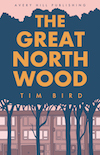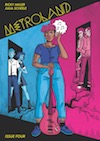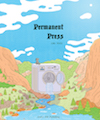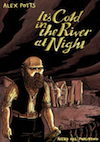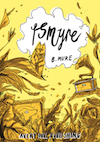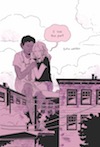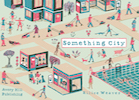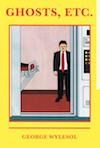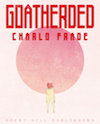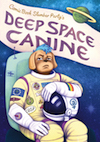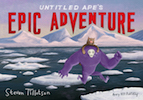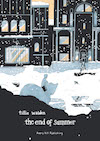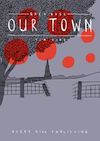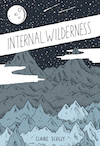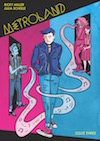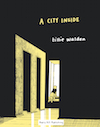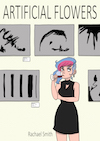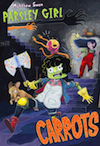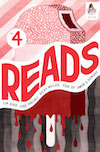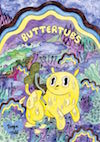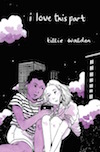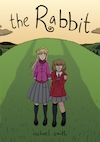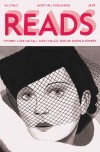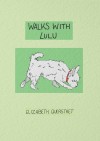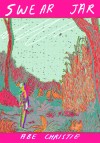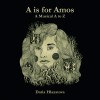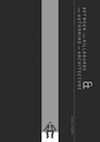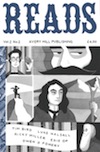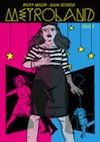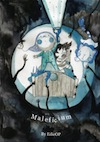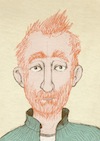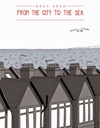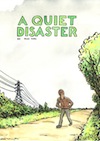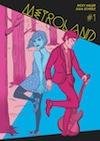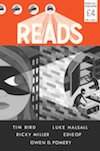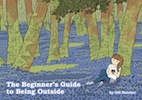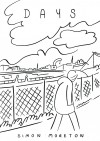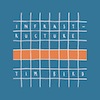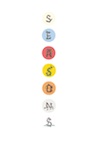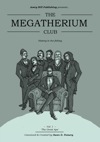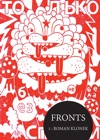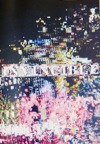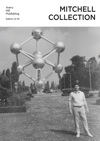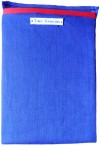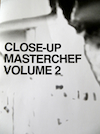A huge thank you to everyone who’s pledged to support our first ever Kickstarter campaign so far!
You can watch a fantastic video that the three creators made about their books by going to our Kickstarter campaign page here.
This week we’ve been sharing more information about the first of our 2022 books – 2120 by George Wylesol. It’s an interactive book in which George continues exploring the the boundaries of what can be done with sequential storytelling. His last book Internet Crusader was highly acclaimed for its originality, being called “a masterpiece of intricate design” and “a revelation.” 2120 will be 500 pages long, paperback, full colour. Page size W:195 x H:271mm.
Here’s an interview with George about the book, and some sample artwork.

2120 is your third book with Avery Hill, and it’s clear to see that there are some thematic crossovers with your second book Internet Crusader, with the interest in gaming and reader interactivity and pushing the form of comics in new directions. What is it about gaming that you find compelling? And do you think comics are an art-form particularly well-suited to exploring these themes?
I really like writing and drawing, so graphic novels is a natural intersection of the two for me. But I realized that I really don’t like drawing the same characters over and over again. It gets really frustrating and tedious for me.
So I did Internet Crusader without drawing any characters really, and I thought it worked pretty well. In the 2nd half of that book, the viewer fights through the depths of hell in a 1st-person POV, and I was also surprised that it worked.
So for 2120, I decided to continue using that first-person POV. I played some ancient point-and-click games on the Internet Archive, and realized the format could work pretty well as a book. I’ve been interested in interactivity for a while – I did a short-lived choose-your-adventure narrative on Instagram a few years ago, and always wanted to make something bigger with the same kind of interactivity, so it all came together with 2120. I think there’s a lot of room in comics for more experimental work, so it was a good fit.
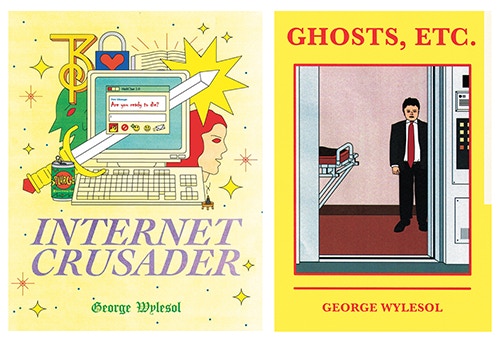
Do you see any ways in which your first book Ghosts Etc. informed the two subsequent books, even though it’s the most different?
Not that much. Ghosts, Etc. was a collection of some of the work I made for my MFA thesis. That body of work was focused on “bad” art; like ugly text, cheap materials, and printing errors. These themes have definitely continued to inform a lot of my work to this day.
In working on 2120, I realized that Ghosts is maybe a prequel to 2120? I didn’t know quite what I was doing with that story conceptually at the time, but in working out some of the themes and concepts in 2120, Ghosts started making more conceptual sense. There’s a subtle reference to Ghosts in one of the rooms in 2120.
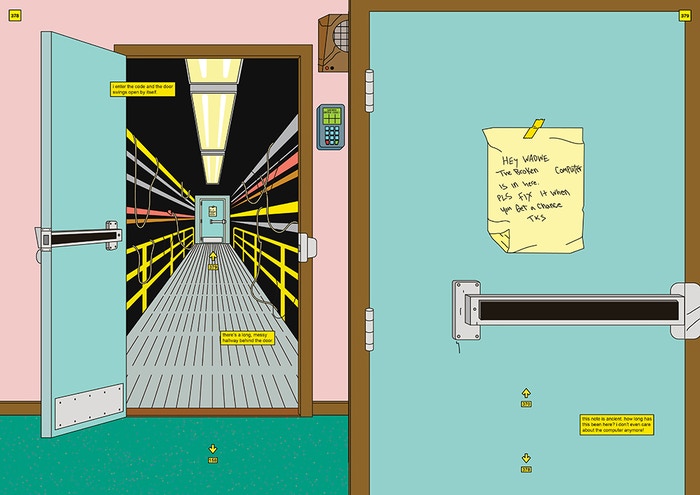
What did you most enjoy about the project, and what were the biggest struggles?
I loved working on this project from start to finish. It was a bigger investigation of the “bad” art I mentioned above, and I really liked a chance to get more conceptual and philosophical than I have in the past. I was able to explore storytelling in a way I haven’t before, and there are certain surprising moments in the book that were really unique and exciting for me to work on.
The biggest struggle was the technical side. It was a nightmare lol from having these massive Adobe Illustrator documents that were so slow, to figuring out the pagination. The absolute hardest part of this was the 1st floor hallway; it was essentially 100 pages of almost identical hallways and it was so hard to keep track of everything and make sure all the pages connected!!

How did you approach the project… what was your starting point?
I had this idea first- environments where you’d turn the page to which direction you wanted to explore, or which thing you wanted to investigate. I made a little dummy book that was basically the outside of a building, the lobby, some halls. I thought it worked pretty well, so I started writing.
I wrote the whole narrative out and used it as a rough guide. Eventually I abandoned almost all of that original text and narrative, but it was a good starting point.
Did you show your work-in-progress to many people for feedback, or did you prefer to mostly go it alone?
No, I didn’t show anything to anyone. I might have shown that first dummy to some friends and my wife, but that’s about it.
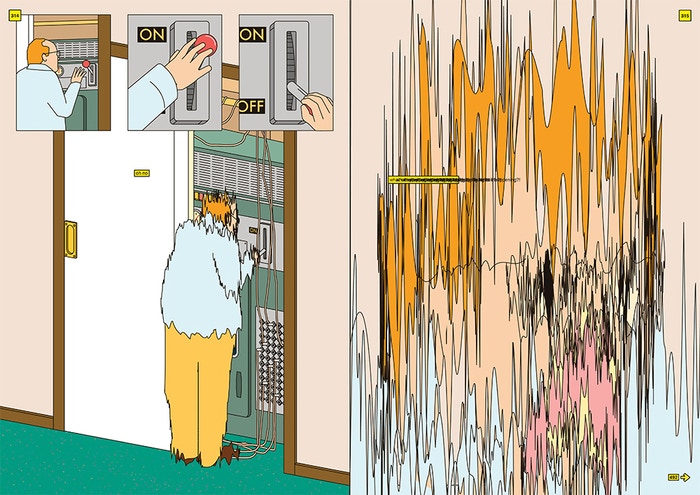
Were there any particular influences on this project, either from the world of comics or from other art-forms?
Yeah definitely. I think Silent Hill 2 was actually the biggest influence, and the conceptual inspiration for this from the beginning. House of Leaves was as well; the author talked about how it was a love story disguised as a horror story, and I really liked that framing.
A lot of the visuals came from my time as a janitor; for a few years I used to clean this big half-empty office building. It was originally a bank, that a hospital bought later. They turned half of it into doctors offices that weren’t really used. The other half was administration that also wasn’t being used. So every night I was cleaning this mostly-unused office building that was just empty and kinda creepy. There were random things left behind, like paperwork, personal items, etc, and I used that as the visual inspiration from this. I took a lot of pictures back then; I didn’t even know why at the time but they came in handy!
How did you create the artwork for the book, what tools did you use?
I drew everything in Adobe Illustrator, then printed it and scanned it into Photoshop, to get the texture.
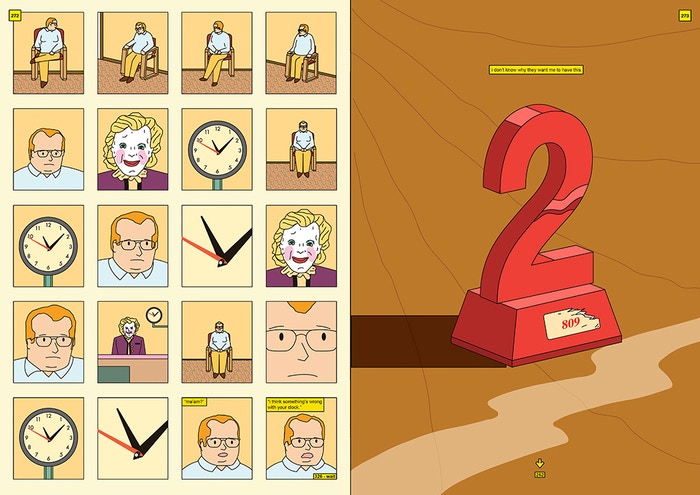
Do you think your illustration work and comics work influence each other, or are they quite separate processes for you?
I think they definitely influence each other. Illustration generally has to communicate well by “showing,” which can be really useful for a book like this, which has sparse dialog and narration. Technical things like composition and expressive color also come from illustration; it’s important to consider how the image is composed and you could use color to communicate emotion and tone.
But illustration can also be a little “safe,” visually, and making work like 2120 and other experimental personal pieces can help keep my illustrations from becoming too stale or repetitive.
Did you learn anything from making this book?
Definitely; there were parts of this that were really stressful, and the sheer size of it was daunting. But finishing it and being proud of the final result was a good confidence-booster. Whether or not it gets a good reception, this helped me realize that I can make something substantial, experimental, and work with more abstract concepts and philosophies.
I also learned AfterEffects and Audition just to make the trailer lol; I’m not interested in making animations, but I really had a blast making this and experimenting with sound.

Please have a look at our Kickstarter page and consider helping fund this epic interactive book!


